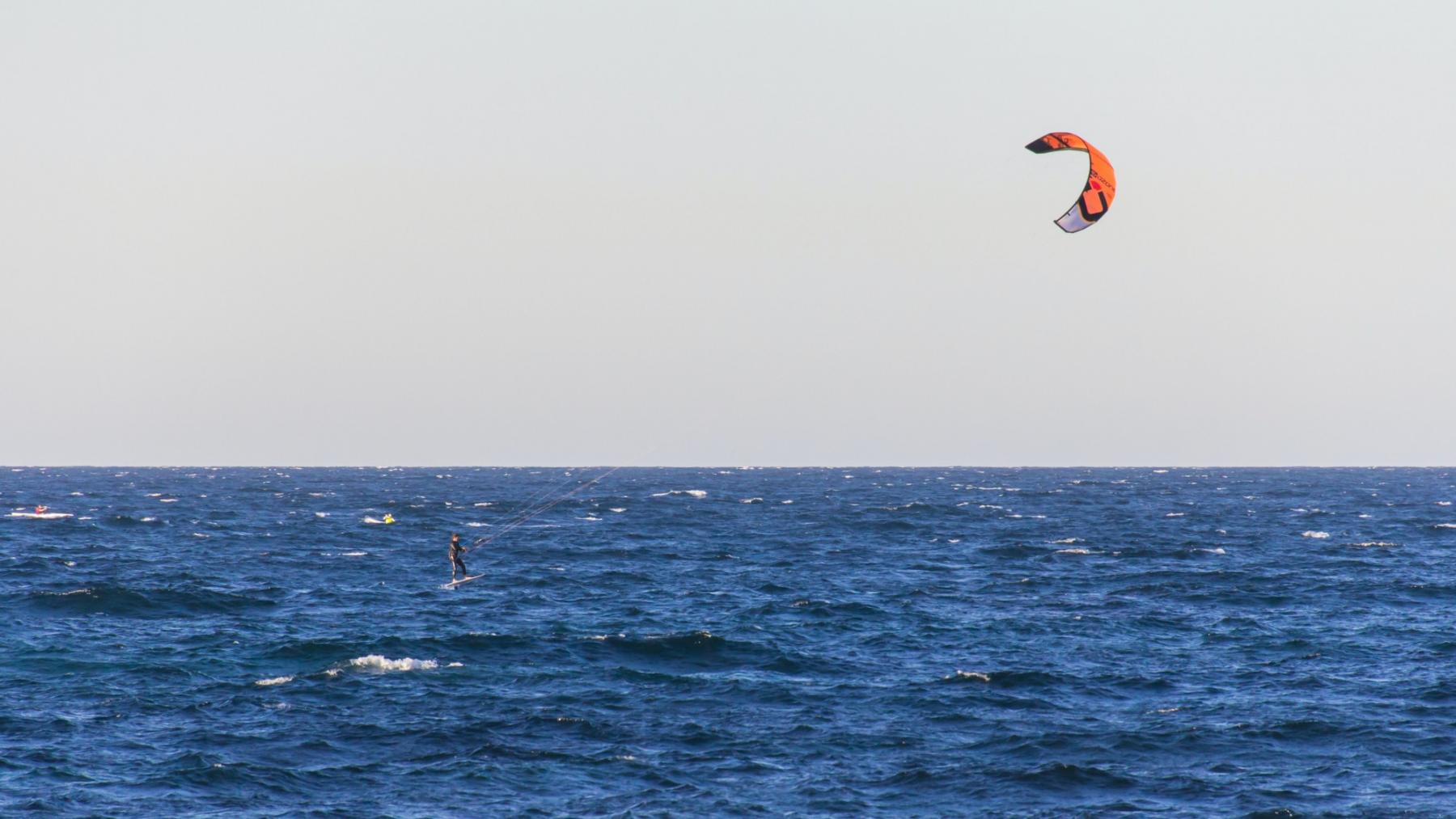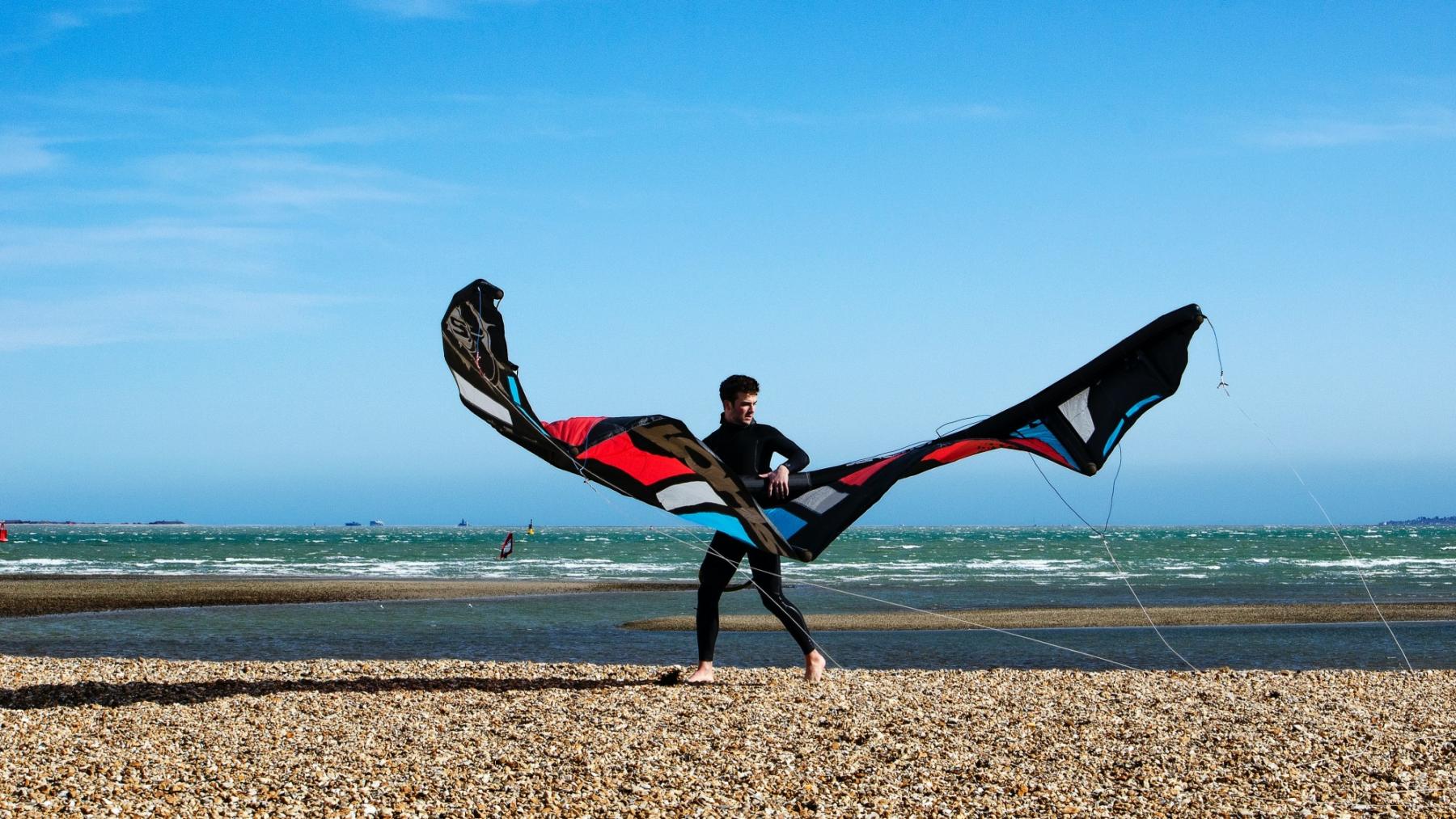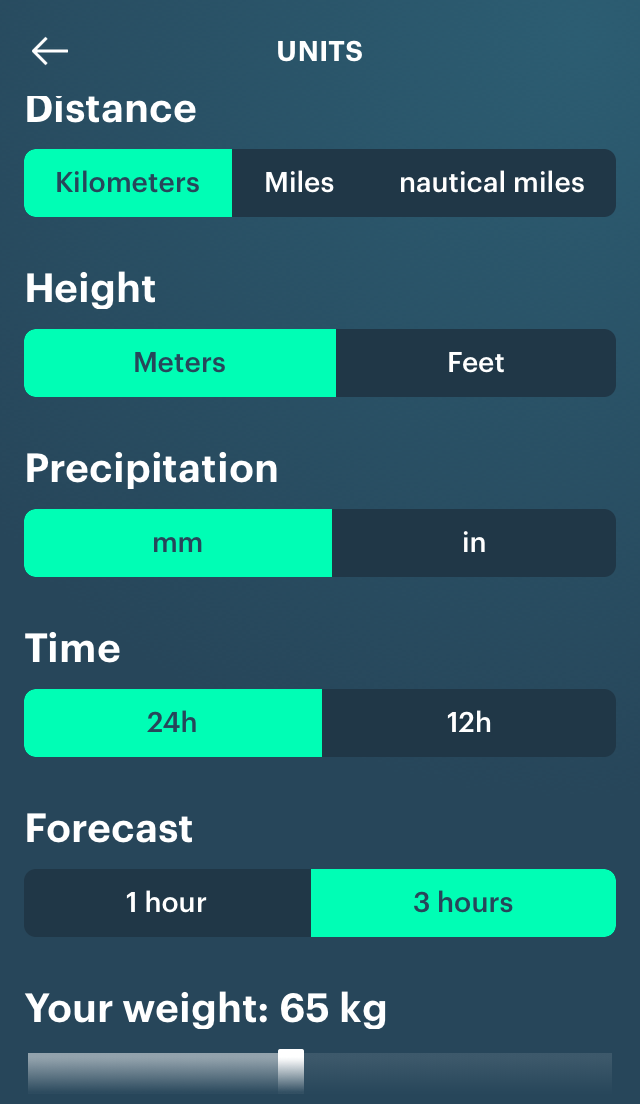
How to choose the right kiteboarding kite size
Currently, kiteboarding is rapidly gaining popularity in the world, although it acquired its modern look only in the late 1990s. At the same time, kiteboarding is one of the most dangerous kinds of extreme sports. Therefore, the most important thing to minimize risks and enjoy the ride is choosing the right kiteboarding kite size.
What is a kiteboarding kite?
A kite is a kind of kitesurfing sail, similar in some ways to a parachute. Without it you can't do this sport — you just can't fly anywhere. And, just like in many other sports, kites come in many types.
There are two main types of kites: tube kites and parafoils. They are fundamentally different in design and the possibilities of their use.
Why to choose the exact kiteboarding kite size?
Unfortunately, there is no universal kite size.
So the kite size is the most important criterion for choosing a kiteboarding kite. It is defined as the area of its length and width in square meters.
In order to make the most of the different weather conditions, as a rule, kiters have a set of kites of different sizes for different winds or use rental equipment.
The kite size choice depends on several parameters: wind and gust speed, rider's weight and skill level, riding style, and board type. The shape and type of the kite also matter when choosing — a foil kite can be lifted into the air in the lighter wind than an inflatable kite.
Each kite also has its own wind range:
- If the wind force is less than the lower limit of the wind range, then the traction force of the kite won’t be enough for the board to confidently keep the athlete on the water.
- If the wind force is higher than the upper limit of the wind range, then the thrust will be excessive, the athlete will not be able to move against the wind, he or she'll be ‘drained’ by the wind.
It is advisable to choose the size of the kite for the wind range that most often blows in the main riding area.
The optimal number of kites is 2 or 3 for different wind conditions.

Photo: photoholgic / unsplash
What are the typical and most common kite sizes?
For a general understanding, you can focus on such calculation (but it doesn’t take into account weight and skills):
- Large kite for lighter winds (14–18 m) — 3–7 m/s.
- Medium kite for medium winds (11–13 m) — 7–9 m/s.
- Small kite for higher winds (5–9 m) — 9–13 m/s.
Still, the most universal kite size in the world is 12 m². It is suitable for medium wind range, kiters of different levels, and medium weight.
How to choose the right kiteboard size for kiteboarding?
The most important parameters for sizing are: kiteboarder weight and wind speed. As a rule, all kites have a wind range for a kiter with the weight of 75 kg.
The basic rule to follow when choosing a kite size — the stronger the wind you expect, the smaller your kite should be.
The wind range at which you can safely ride is from 3–5 to 15–20 m/s, and comfortable for most riders — from about 6 to 12 m/s. Most kite manufacturers produce kite models ranging from 5 m² to 17 m² (inflatable), or up to 21 m² (parafoils).
For a beginner, it is better to use small kites — at the lower end of the range that suits you in terms of weight and wind. Amateur riders are better off targeting a suitable wind range, while professional riders can use larger kites to increase speed.

Photo: uniqsurface / unsplash
All kite manufacturers indicate on the packaging the standard wind range that they recommend for using this kite. As a rule, these values are valid for riders weighing about the same 75 kg. If you weigh more or less, you can calculate: for every 10 kg of difference, add or subtract 1 m² for the size of the kite or 1 m/s for the wind speed.
For example, if there’s a 10 m kite, wind range 12 m/s, your weight is 95 kg, you can use this kite at a wind range of 14–15 m/s. Or for 12 m/s wind speed, you actually need a 12 m kite.
Another example, if there’s a 9 m kite, wind range 10–12 m/s, your weight is 55 kg, you need to use this kite at a wind range of 8–10 m/s. Or for a specified speed of 10–12 m/s, you need to take a 7 m kite.
Some extra and important advice:
- Don’t choose your own kite ‘with a margin’ of size, supposedly for a weak wind. Too big a kite can easily pick you up in a rush and hit the water or shore. Injuries can be very serious.
- Also, when choosing a kite, you need to decide on the place of kiting and the season: winter, summer, or always. Wind conditions will depend on this: the direction, speed of the wind, and gusts.
- The choice of the kite is also influenced by the rider's skill level: beginner, amateur, professional. The higher the level, the higher the range the kite can be used at, and vice versa.
- The rider's gender and age aren’t essential for the choice of a kite. Men and women can use the same kite depending on their weight and skills.
What is a kiteboard size chart?
The kite size wind chart is a unified table of rider parameters and riding conditions to help you choose your kite and board. As a rule, such tables are made by equipment manufacturers and kitesurf schools. Please note that the data in this table is approximate and does not include the skill level of the rider.
So from the table below, you can choose your kite and the size of the twin-type board depending on the average wind speed at the place and your weight.

Kiteboarding kite size chart. Illustration: Valerya Milovanova / Windy.app
Example of using the chart for 75 kg rider:
- 12 m kite wind range is 7-12 m/s.
- 10 m kite wind range is 9-14 m/s.
- 9 m kite wind range is 9-14 m/s.
- 7 m kite wind range is 10-16 m/s.
What size kiteboard for 85 kg? For example, for the wind range of 7-12 m/s it is 12-13 kite size, and for the wind range of 14-20 m it is 6-7 kite size. Simple.
Where to find and how to choose the kite size in Windy.app?
You can choose the size of your kite using the kiteboarding calculator in Windy.app. Yes, there is one! You don't need to make calculations.
1. From the Home screen of the app, go to the Main menu, then Settings > Units. Here at the end of the screen, enter your exact weight.

2. Open the nearest or your favorite spot in the app — for example, Tarifa in Spain. To make a spot favorite click on the star icon right to its name.
3. Choose a Kite weather profile by the icon right of the weather models with a preset of 10+ weather parameters you need to know for kitesurfing.
4. Then look at the weather parameters — now you see the exact kite size depending on the two main parameters for choosing the kite: your weight and wind speed.

5. As a general rule, together with a calculator, use also the kite size chart and other advice from this article. And read "Mini guide to kitesurfing with Windy.app".
Text: Natalia Kirasheva. Ivan Kuznetsov, an outdoor writer from the Dolomites, Italy, and Karelia, Finland, contributed to this article. Read his other articles.
Illustration: Valerya Milovanova, an illustrator with a degree from the British Higher School of Art an Design (BHSAD) of Universal University
Cover photo: uniqsurface / unsplash
You will also find useful
A brief guide to kiteboarding for beginners
What are the different types of kitesurfing kites
Big collection of articles about kitesurfing
Latest News
Professional Weather App
Get a detailed online 10 day weather forecast, live worldwide wind map and local weather reports from the most accurate weather models.
Compare spot conditions, ask locals in the app chat, discover meteo lessons, and share your experience in our Windy.app Community.
Be sure with Windy.app.



